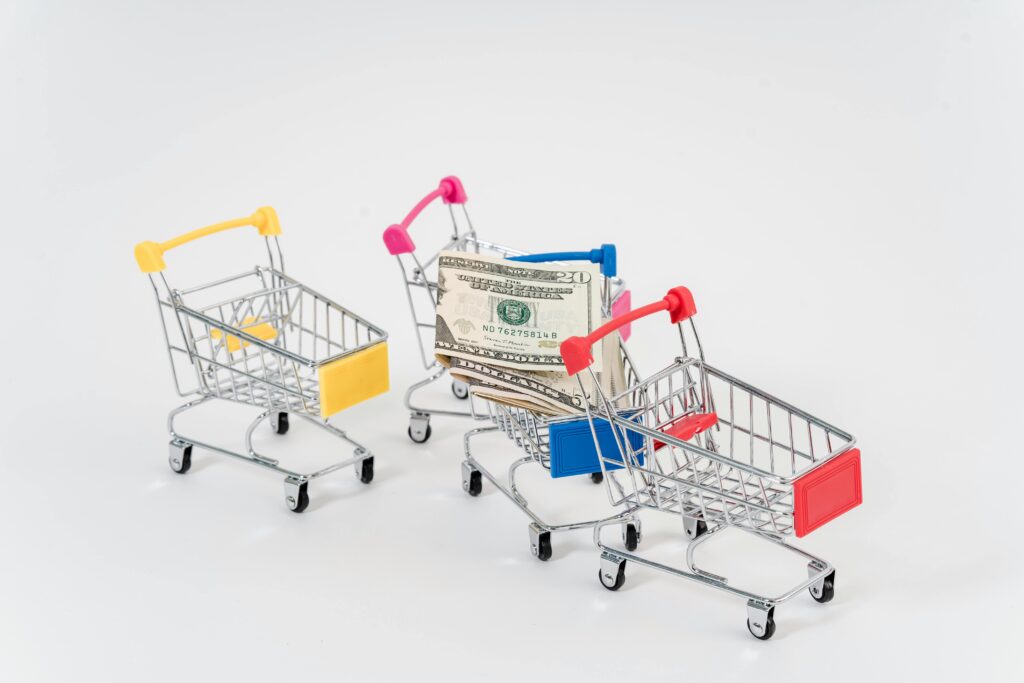Introduction
The future of eCommerce is evolving at lightning speed. What worked in 2020 is no longer enough to compete in 2025. With the global market projected to exceed $7 trillion by the end of 2025, staying ahead of consumer behavior, technology, and retail innovation is no longer optional—it’s survival.
In this blog, we’ll explore the top eCommerce trends for 2025, backed by data, case studies, and actionable steps. Whether you’re running a dropshipping store, selling digital products, or building a full-fledged brand, these insights will help you future-proof your online business.
Chapter 1: AI-Powered Shopping Experiences
Artificial Intelligence (AI) is reshaping online shopping—from personalized recommendations to AI-driven customer support.

Key AI Applications in eCommerce
- Personalized Product Recommendations – Think Netflix-style shopping.
- AI Chatbots – Answer customer queries 24/7 and recommend upsells.
- AI-Powered Search – Voice and visual search powered by AI.
- Smart Inventory Management – Predict demand to avoid overstock/stockouts.
Example
Amazon uses AI to recommend products that increase average order value by up to 35%.
Chapter 2: Future of Commerce
Social media isn’t just for marketing anymore—it’s becoming the storefront itself.
Platforms Leading Social Commerce in 2025
- Instagram Shops – Integrated checkout within the app.
- TikTok Shop – Viral products + influencer marketing = explosive sales.
- Facebook Marketplace – More localized shopping.
- Pinterest Shopping Pins – Perfect for home décor, fashion, and DIY.
Why It Matters
Over 60% of Gen Z and Millennials have purchased directly through social media in 2024, and this number is only growing.
Chapter 3: Subscription Models & Memberships
Recurring revenue is king. Subscription-based eCommerce is thriving, from beauty boxes to meal kits.
Benefits of Subscription eCommerce
- Predictable monthly revenue.
- Stronger customer loyalty.
- Reduced churn when paired with rewards.
Examples
- Dollar Shave Club – Built an empire on subscriptions.
- Sephora’s Beauty Box – Offers curated products monthly.
Chapter 4: Augmented Reality (AR) Shopping
Augmented Reality is closing the gap between physical and digital retail.
AR Use Cases in 2025
- Virtual Try-On – Clothing, makeup, eyewear.
- Home Décor Visualization – See furniture in your room before buying.
- Interactive Packaging – Scan products for tutorials and bonus content.
Data Point
IKEA’s AR app boosted sales conversions by 25% when shoppers visualized furniture in their homes.
Chapter 5: Sustainability and Eco-Friendly Shopping
Today’s consumers—especially Gen Z—demand eco-conscious brands.
Sustainable Practices That Win Customers
- Eco-friendly packaging.
- Carbon-neutral shipping.
- Transparent sourcing.
- Buy-back/recycling programs.
Example
Patagonia thrives by staying loyal to its eco-driven brand values.
Chapter 6: Voice Commerce
With Alexa, Siri, and Google Assistant in millions of homes, voice shopping is on the rise.

Stats
- By 2025, $45 billion in retail sales are expected to come from voice commerce.
- Most common purchases: groceries, household items, repeat orders.
Optimization Tips
- Use natural-language keywords.
- Simplify product descriptions.
- Focus on “hands-free” categories.
Chapter 7: Blockchain and Cryptocurrency Payments
Cryptocurrency adoption is slowly but surely becoming mainstream in future of eCommerce.
Why Crypto Payments Matter
- Lower transaction fees.
- Faster global payments.
- Appeals to tech-savvy shoppers.
Bonus: Blockchain in Supply Chain
Blockchain allows for transparent product tracking, building trust with customers.
Chapter 8: Omnichannel Integration
Consumers want seamless shopping across platforms:
- Browse on Instagram.
- Add to cart on a website.
- Complete purchase in-store or via mobile app.
How to Build an Omnichannel Strategy
- Sync inventory across channels.
- Enable customer profiles that work across web + app + physical store.
- Offer consistent loyalty rewards.
Example
Nike’s mobile app integrates with retail stores for a seamless shopping experience.
Chapter 9: Same-Day and Drone Delivery
Fast delivery is no longer optional—customers expect it.
The Future of Shipping in 2025
- Same-day delivery for urban areas.
- Drones for last-mile delivery.
- Smart lockers for flexible pickup.
Data
Companies offering same-day delivery see a 30% increase in conversion rates.
Chapter 10: Data Privacy and Customer Trust
As personalization grows, so do privacy concerns.
Key Privacy Trends
- Stricter data protection laws (GDPR 2.0, CCPA updates).
- First-party data collection (email, SMS).
- Transparent privacy policies.
Action Step
Build trust by showing customers how their data is stored and used.
Chapter 11: Rise of Niche Marketplaces
Instead of competing with Amazon, many entrepreneurs are building niche-specific marketplaces.
Examples
- Handmade crafts → Etsy
- Sneakers → StockX
- Eco-friendly products → niche platforms with loyal audiences
Why Niche Marketplaces Work
- Lower competition.
- Loyal community.
- Easier branding opportunities.
Chapter 12: The Creator Economy in the future of eCommerce
Creators and influencers are launching their own future of eCommerce brands.
Case Studies
- Emma Chamberlain → Chamberlain Coffee
- MrBeast → Feastables
Action Plan for Store Owners
Partner with micro-creators and co-create products.
Conclusion
The future of eCommerce in 2025 is AI-driven, personalized, sustainable, and customer-first. Businesses that adopt these trends will thrive, while those ignoring them risk being left behind.
Action Checklist
- Implement AI tools for personalization.
- Sell through social platforms.
- Explore subscriptions & memberships.
- Adopt AR for customer engagement.
- Go green with eco-friendly practices.
- Get ready for voice commerce.
- Accept crypto payments.
- Embrace omnichannel shopping.
- Speed up logistics with same-day shipping.
- Build customer trust through transparency.
- Explore niche markets.
- Collaborate with creators.
Adapt early, test constantly, and scale smart with Clickify.shop. The future is already here—make sure your eCommerce store is ready.
